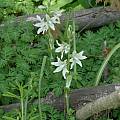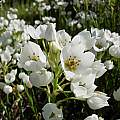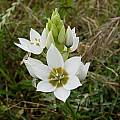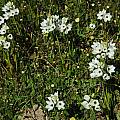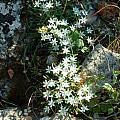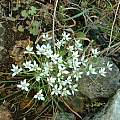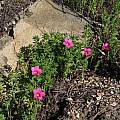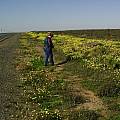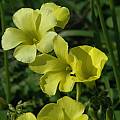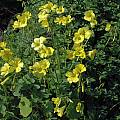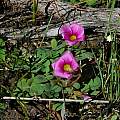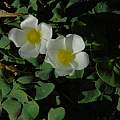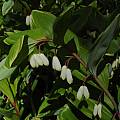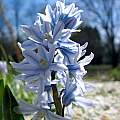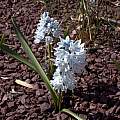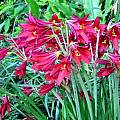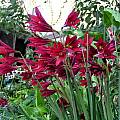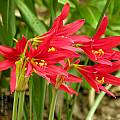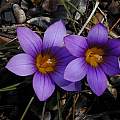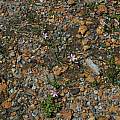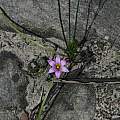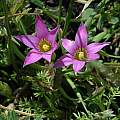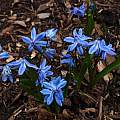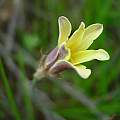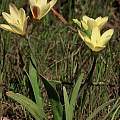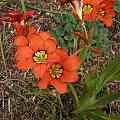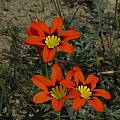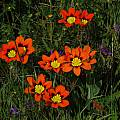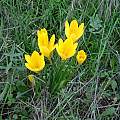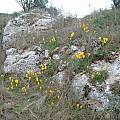On the legacy bulb wiki pages Kathleen Sayce reviews bulbs that outlast their gardeners, with some hints as to why. Suggestions came from PBS list members, review of world weed lists, USDA PLANTS National Database, Flora of North America, and some university databases. For more information consult Legacy Bulbs Index and Introduction.
Information about relevant Ornithogalum through Sternbergia species can be found on this wiki page.
Information about other species is found on the pages linked below:
Albuca through Amaryllis - Anemone through Chionodoxa - Colchicum through Erythronium - Ficaria through Hyacinthus - Ipheion through Iris - Ixia through Lycoris - Merendera through Nerine - Trillium through Zephyranthes
Ornithogalum is a genus of bulbs that are mostly native to southern Europe and southern Africa. Some members can be persistent to obnoxious garden pests, resulting in a common saying that "ornithogalums are thugs". While many bulbs are persistent, true thug status is often reserved for Ornithogalum umbellatum, which can overrun gardens in a few years.
Ornithogalum nutans, silver bells, is known to persist in the Pacific Northwest, around the Great Lakes, south to Arkansas and North Carolina; WHZ 6-10.
Ornithogalum pyrenaicum, Pyrenees star of Bethlehem, has been noted from West Virginia. Another common name was Bath Asparagus, as it was formerly common around Bath, England; WHZ 5-9.
Ornithogalum thyrsoides, chincherinchee, was mentioned as likely to persist by several references. It is native to the Cape Province of South Africa; WHZ 7-10.
Ornithogalum umbellatum, star of Bethlehem, grows on in gardens long after other plants are gone. In active gardens it can be a significant nuisance. It is widely known as persistent in most states and provinces of North America, excepting a few Rocky Mountain states and Midwestern provinces.
Oxalis is a worldwide genus, excepting polar regions, and is especially diverse in the tropics. Species are widely grown as ornamentals, and several are invasive. The following is a partial list. Species native to North America were not included, as they typically grow easily in woodland gardens in areas where they are native.
Oxalis convexula is a winter spring bloomer from South Africa with rosy-salmon flowers with a yellow throat. A pbs list member reported that in Southern California the plants form multiple small bulbils clustered about the axis of the flower stems. These are deposited on the ground below the plants and, in areas such as San Diego, they produce large numbers of plantlets either in spring or in the fall. If not destroyed, they produce within several months a new crop of flowering specimens.
Oxalis debilis, pink woodsorrel, is common in the southeastern US.
Oxalis hirta, tropical woodsorrel, has naturalized in California.
Oxalis pes-caprae has many common names, and is native to South Africa. It has naturalized or considered an invasive weed in many warmer parts of the world including the United States (particularly coastal California and Florida), Europe, Israel and Australia. WHZ 9-10.
Oxalis purpurea, purple woodsorrel, is native to southern Africa, but it is known on most continents as an introduced species; WHZ 8-11.
Oxalis radicosa, dwarf woodsorrel, has naturalized in California.
Oxalis rubra, windowbox woodsorrel, has naturalized from California across the south to Virginia.
Polygonatum is a temperate North Hemisphere genus, with native species in Asia, Europe and North America. The following species are not native to North America, and have naturalized in gardens.
Polygonatum multiflorum, Eurasian Solomon’s seal, has naturalized in Ontario and Quebec; WHZ 4-10.
Polygonatum odoratum scented Solomon’s seal, is native to Eurasia, including Britain, and is widely planted in North America in woodland gardens. It naturalizes easily in suitable soils and moisture regimes; WHZ 4-8.
Puschkinia scilloides, striped squill, is native to Turkey, Causcaus, and south to Lebanon, Iraq and Iran. It is hardy and naturalizes easily in open to woodland shade locations; WHZ 3-9.
Ranunculus ficaria see Ficaria verna
Rhodophiala bifida, oxblood lily, is native to South America, and easily persists in southeastern US gardens. It was mentioned by several PBS members; WHZ 7-11. It likes warm summers with some moisture. This is a classic pass-along plant in the South.
Romulea ramiflora has a rather wide distribution in Spain, Portugal, France, Italy and Greece. A pbs list member from Southern California reports that this species become invasive in his garden.
Romulea rosea rosy sandcrocus, is endemic to the western Cape Province in South Africa and has naturalized in Europe, Australia, New Zealand and California (Monterey to Humboldt Counties, Contra Costa, Eldorado and Butte Counties). It is considered an invasive weed in some countries; WHZ 8-10. Photos below from wild areas of Australia and California.
Scilla, bluebell or squill, is an Eurasian genus of widely planted bulbs that do well in moist, humus-rich, well-drained soil.
Scilla bithynica, Turkish squill, was mentioned as easily naturalizing by several PBS gardeners, WHZ 6-8. In Britain it occasionally escapes gardens.
Scilla siberica, Siberian squill, has naturalized widely in eastern North America, from Missouri and Kentucky north and east. Also noted from Utah. Expect to find it persisting widely in many gardens. From Siberia, it is hardy in WHZ 2-9.
Sparaxis wandflowers, grow in winter, flower in spring and are summer dormant. They do well in winter wet, summer dry, frost-free climates, such as in southern California; WHZ (8) 9-10.
Sparaxis tricolor, wandflower or harlequin flower, (or hybrids of this species), has naturalized along the central California coast.
Sternbergia lutea, fall daffodil, naturalizes in mild climates, WHZ 7-11. It is widespread in Europe; it has been reported as naturalized in Virginia in the PLANTS database. Expect to find it in gardens on the West Coast, and across the southern tier of states.
Species listed on other legacy bulb pages can be found alphabetically by clicking on the links below or by going to the index and introduction page where they will be listed in a table.
Albuca through Amaryllis - Anemone through Chionodoxa - Colchicum through Erythronium - Ficaria through Hyacinthus - Ipheion through Iris - Ixia through Lycoris - Merendera through Nerine - Trillium through Zephyranthes - Legacy Bulbs Index and Introduction
